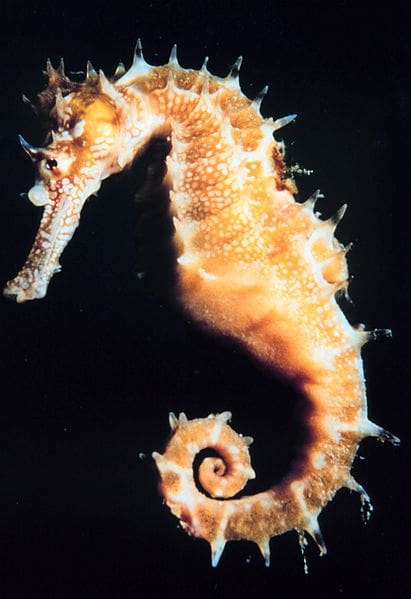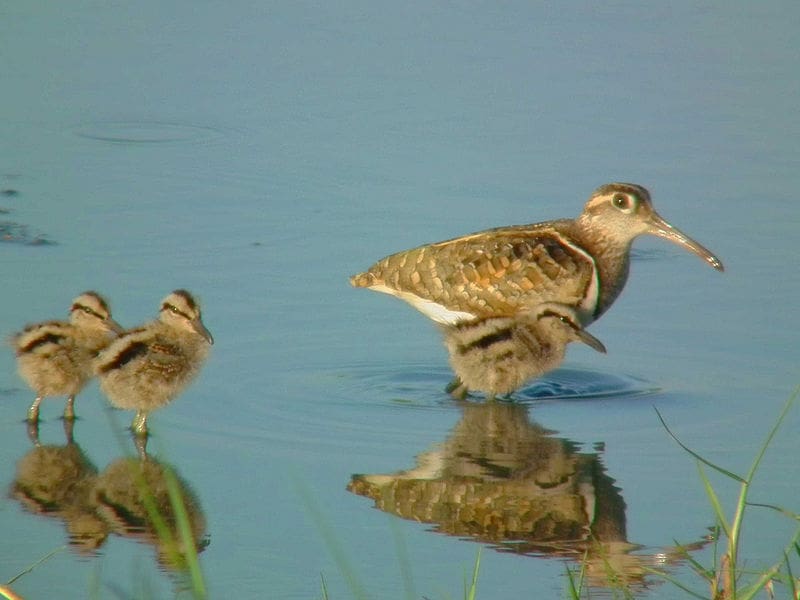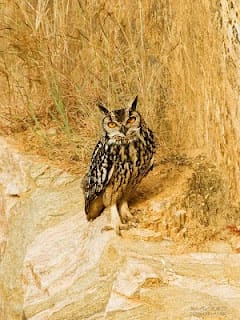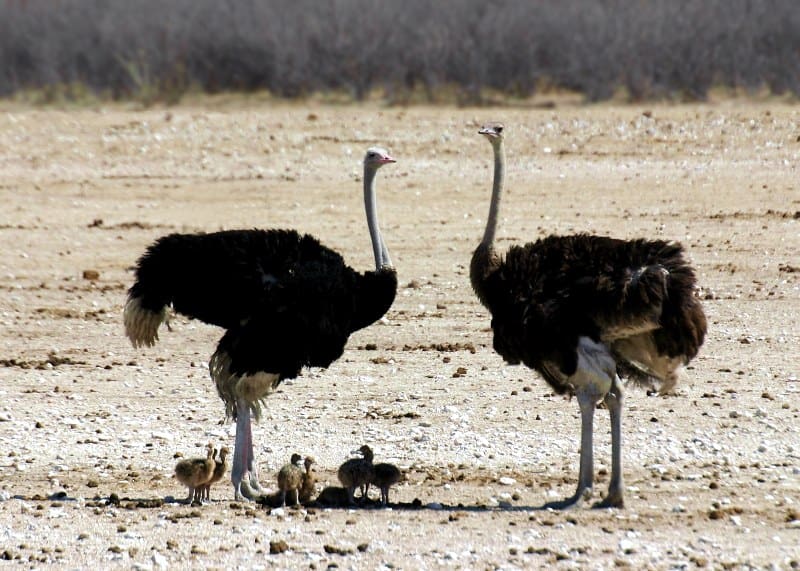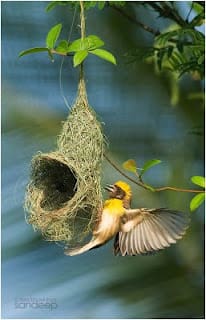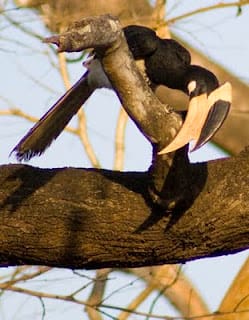On Father’s Day, we raise a toast to the best animal dads, but our top contender isn’t a bird!
It might be just another Hallmark card red-letter day, but Father’s Day means a lot to us Ogres. And not just because we hold our own dads in great esteem. While motherlove dominates the wild world, there are a few notable exceptions among animal fathers who shine bright. Here’s our pick of the Top 6. You’re free to argue or disagree, but do leave a comment if you’d like to split hairs, or have a bone or feather to pick.
If this were a gallop poll, those delicate little fish known as seahorses would have breasted the ribbon without challenge. When it’s time to make more little seahorses (or sea-foals, should we say?), dad-to-be and mom-to-be the male waltz intimately for about eight hours before the female lays about a thousand eggs in the male’s brood pouch. The male fertilizes the eggs by releasing his sperm into the surrounding water and then releases the hormone prolactin (which, in mammals, induces the production of milk). The eggs hatch inside the pouch and the young swim away, and with that the seahorses’ parental responsibility comes to an end.
Seahorses are threatened by over-fishing and collecting for ornamental aquariums. The biggest threat comes from Chinese epicureans who believe that eating seahorses (often on a skewer or in soups) has aphrodisiac properties.
2. Greater Painted Snipe
Polyandrous female Greater Painted Snipes are the epitome of women’s lib. Brightly coloured and aggressive, they court drab, dowdy males. Once they’re through with the formalities, they lay their eggs and move off to repeat the show with another male. The males incubate and hatch the eggs, teach the chicks to forage and then shoo them off to lives of their own. Once the nest is empty and the breeding season is back on the calendar, it’s time for papa Painted Snipe to come into his own all over again.
3. Indian Eagle Owl
Look into the deep amber eyes of the Indian Eagle Owl. Does he look like he has a chip on his shoulder? Not surprising, for he’s not exactly your lovey-dovey kind of papa but the strong, silent, responsible type with exemplary family values. A tad conservative, but a swell guy in the final analysis.
The male Eagle Owl has his act cut out: He goes about aggressively defining his territory in the best real estate he can find, then attracts a suitable mate and provides for her as she incubates their eggs. Once the eggs hatch, he steps up the hunt, cleaning up every furball in the vicinity to nourish his hungry, greedy and fast-growing little ones. He also joins his mate in teaching the fluffy, gauche young things to fend for themselves. And when it’s all done, it’s time to repeat it all over again!
4. Ostrich
When the male ostrich fights off competitors to cobble together a harem of five to six females, he is taking on an enormous responsibility that few of us would envy. Once done with the amorous preliminaries, the females get down to business. The male does the dirty work, scraping a pit in the ground that can be up to two feet wide and ten feet wide. In this large communal nest, the pregnant females lay their eggs. The hens incubate the eggs during the day when their drab plumage blends perfectly with the sand. In the dangerous dark of the night, the dark-coloured male takes over. Hunched over the nest in the dark, he is almost impossible to see. Once the eggs hatch, he teaches the chicks to feed and defends them against predators. A kick from his powerful legs, tipped with two sharp claws, has been known to kill lions. This guy is a macho dad all the way.
4. Weaverbird
Apart from the usual stuff, stability and security are two traits that females of the species have always sought in males. Real estate and housing are huge concerns among some birds, the male weaverbird’s badge of courage is his ability to build a nest that can win his lady’s approval. When the first rains arrive, he singles out the best blades of grass and weaves his nest while the strands are still moist. As they dry they stiffen into the shapes he has envisioned.
The female, true to character, is a picky customer, and she will reject outright a nest that doesn’t appeal to her aesthetic tastes. Perhaps she also inspects the nest for stability, protection from predators and weather, and she ends up rejecting many half-built nests. But Bob the Builder persists until he has built the heart-stopper of nests. And then, mama and papa raise their brood in the comfort of the nest that won the Good Housekeeping Award for Birds.
5. Hornbill
Male hornbills of nearly all species bear an enormous burden. Mostly, he and his chosen mate pair for life. When they are ready to start a family, they single out a good-sized hollow in an old forest tree.
The female enters the hollow, sheds most of her feathers (possibly to line the nest), and the male imprisons her inside by sealing the opening with mud. He then leaves the mother-to-be and her eggs to forage. He makes several trips a day, clattering his bill and making the hills reverberate with his honking call. Once the eggs hatch and the young are ready to fledge, the male unseals the nest.
In the event that he is killed during the nesting period, both the female and his brood will starve to death. Just imagine the anxieties faced by single-income families.
Photos: Wikimedia Commons (Seahorse, Greater Painted Snipe and Ostrich). Pictures of Indian Eagle Owl and Weaverbird by Sandeep Somasekharan and Malabar Pied Hornbill by Arun Menon.
Text by Beej
Read more about:
Indian Eagle Owls
Weaverbirds
Malabar Pied Hornbills
- TL;DR – Death Stalks Like A Marabou Stork - July 24, 2024
- Dimorphic Egret – Meet this East African mystery bird - June 8, 2024
- Encounter: Northern Treeshrew in Arunachal Pradesh - May 19, 2024

